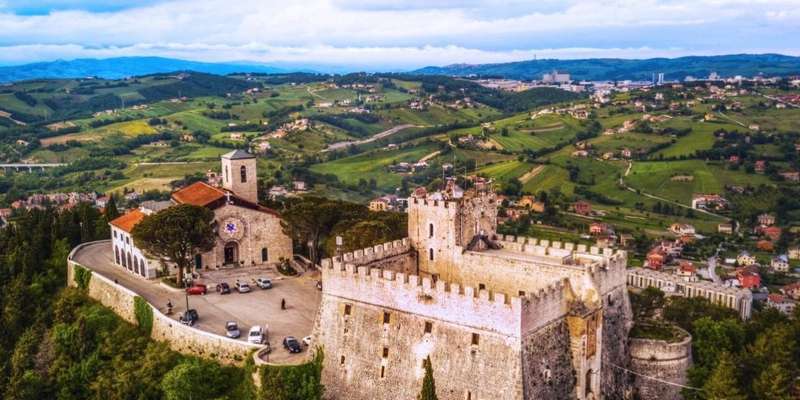- Home
- Useful Tips
- Exploring the ancient tratturi...
The ancient tratturi paths near Campobasso offer a unique glimpse into Italy's pastoral history, but many travelers struggle to find reliable information about these lesser-known trails. Unlike famous routes such as the Cinque Terre, the tratturi lack clear signage and visitor resources, leaving hikers frustrated with incomplete maps and vague directions. Over 70% of visitors to Molise report difficulty locating trailheads, according to regional tourism surveys. The frustration of circling rural roads or missing key historical context can turn what should be a magical walk through centuries-old shepherd routes into a stressful ordeal. These grassy pathways – some dating back to Roman times – deserve more than just aimless wandering. Without proper guidance, you might miss hidden archaeological sites, authentic masserie (farmsteads), and the true cultural significance of these UNESCO-recognized transhumance routes that once connected Abruzzo to Puglia.


Decoding the tratturi network – which paths suit your hiking level?
The sprawling tratturi system near Campobasso comprises routes of varying difficulty, from flat, family-friendly stretches to challenging day-long hikes. The most accessible option is Tratturo Pescasseroli-Candela near Baranello, where compacted earth paths wind past 19th-century sheep stations for gentle 2-3 hour walks. Intermediate hikers should seek out the Lucera-Castel di Sangro section, featuring Roman bridges and occasional steep grades through wildflower meadows. Serious trekkers can test themselves on the full 28km Celano-Foggia route, where original stone boundary markers still stand. Local shepherds advise starting early near Campochiaro to witness the morning mist lifting off these ancient droving roads – a sight unchanged for centuries. Remember that many tratturi cross private land; sticking to marked sections avoids trespassing while still delivering authentic experiences.
Essential gear the locals swear by for tratturi walks
Molise's unpredictable microclimates demand smarter preparation than standard hiking gear. Seasoned tratturi explorers always pack telescopic walking sticks – not for support, but to brush aside morning spiderwebs strung across these little-used paths. Waterproof gaiters prove invaluable after rains when the clay-rich soil clings stubbornly to boots. At family-run shops in Campobasso, you'll find traditional woolen mantelline (shepherd cloaks) that outperform modern rain jackets against sudden mountain showers. For navigation, offline maps like Maps.me show more accurate tratturi segments than mainstream apps, though nothing beats the 1:25,000 scale Cartoguida Molise map from local bookstores. A simple plastic bag becomes crucial for sitting on damp grass during picnics – these trails lack benches, but offer countless perfect lunch spots beneath ancient oaks where shepherds once rested.
Timing secrets for avoiding crowds and seeing wildlife
The magic of the tratturi reveals itself most vividly when you escape the handful of busy weekends each year. Locals know mid-week September mornings offer ideal conditions – cool temperatures, migrating storks overhead, and blackberries ripe for picking along the verges. Arrive by 7:30am in spring to spot wild orchids blooming along path edges before they close by noon. For photographers, late October provides fiery sunsets backlighting the stone muretti a secco (dry walls). Surprisingly, winter walks can be rewarding too; the crisp air carries sounds of cowbells from distant valleys, and you'll often have entire routes to yourself. Just avoid February when seasonal hunting occurs near some trails. The tratturi's beauty lies in their seasonal transformations – follow the shepherds' age-old calendar rather than tourist timetables for an authentic connection to these living history corridors.
Where to refuel with authentic Molise flavors after your hike
No tratturi experience is complete without sampling the pastoral cuisine that sustained generations of shepherds. Skip the touristy spots in Campobasso centro and head to family-run agriturismi like Tenuta Collefrisio near the trails. Their wood-fired bread with locally foraged mushrooms replicates the shepherds' staple panella bread. For the ultimate reward after a long hike, seek out rare pecorino cheese aged in caves at Azienda Agricola Di Nucci – the same caves where drovers once stored cheese during their migrations. Don't miss trattorias serving timballo, a baked pasta dish originally prepared in copper pots carried on mules along these very paths. Many eateries still use 19th-century recipes; ask for 'piatti dei pastori' (shepherds' dishes) to taste the true flavors of the tratturi. These humble, flavor-packed meals connect you directly to the cultural heritage you've just walked through.
